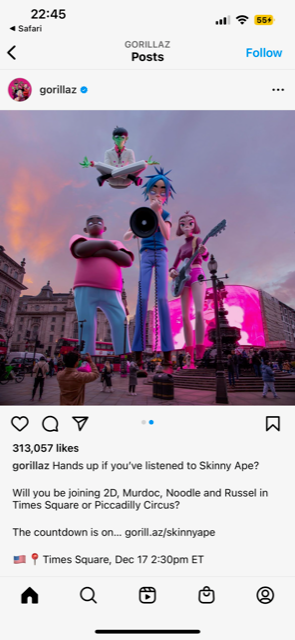Does a DOOH ad that was never broadcast in the physical world actually exist – even if it adds something to the overall effect of the campaign?
Last month, Ocean Outdoor marked a decade of research into the effect of digital out-of-home (DOOH) on people’s brains with the launch of ‘Digital Out of Home – The Vital Ingredient’, their fifth instalment of neuro-marketing research partnering with Neuro-Insight. This work focuses on the effect of DOOH within social media posts.
The data provides another fascinating next step into the world of attention research and goes beyond that of Route’s visual attention data. While Route estimates how many people see the 400,000 OOH ads in Great Britain (and how often, and who they are), the neuro-work takes things onwards to provide the qualitative ‘so what’ by measuring various types of brain activity arising from exposure to different stimulus.
The results of the research demonstrate distinct advertising mindsets in London and outside the capital as different areas of the brain light up when exposed to the ads.

The research turned up a series of fascinating results including:
- “Premium” (large format digital) still (after 10 years) acts as primer for other OOH when used first.
- DOOH acts an effective primer to social media brand campaigns meaning social campaigns work harder after seeing ads on (D)OOH first.
- It also works with social media Influencer campaigns to make the effect even stronger.
However, the most intriguing finding got me thinking in quantum theory. When featured within social media content, DOOH “entangles” with social and takes on a “superposition” which positively influences the overall effect of the social media post and the campaign, potentially without it ever even having to exist in reality.
Quantum theory is a branch of physics that helps us understand the tiniest building blocks of our world, like atoms and subatomic particles. It tells us that these particles don't behave like everyday objects we're used to, like balls or cars, but rather in strange and unexpected ways.
For example, the position of a particle is uncertain until it's measured, and measuring it changes its state. Particles can exist in multiple states at once, a phenomenon called superposition. They can also become "entangled" with each other, meaning that their states are connected, no matter how far apart they are.
Taking this back to the research and DOOH ads, what Ocean and Neuro-Insight have established is that the central presence of a branded message on a digital OOH screen within a social media post takes up this superposition. It gets seen without being seen (in the real world).

What the research also shows is that ads on digital screens in social media posts add significantly to the overall campaign effect – making the brain work harder in many areas. All this happens even without the ad necessarily ever being broadcast (in the real physical world). In this sense the message on the digital screen and the social media content become ‘entangled’ so that they become one and positively affect the overall effectiveness of the ad.
What does this mean for the future of measurement?
This poses a ‘Schrodinger’s Cat’-esque quandary for the quantitative measurement of OOH and adds an extra layer of complexity to anyone who may be considering their response for the new Route RFP!
Does a DOOH ad that was never broadcast in the physical world actually exist – even if it adds something to the overall effect of the campaign? On the other hand, where DOOH ads broadcast the same content in the real world and also on social media – how could we account for the additional reach and frequency generated?
With the rise and rise of in-game advertising and the impending explosion of the metaverse and its potential for advertising this seems like another call for a true cross media measurement – and one that includes OOH and is not ‘simply’ cross-platform video measurement.
While this ‘nested’ meta-exposure remains nascent, it does spell an historic opportunity to undertake new research to further our understanding of how people are truly exposed to campaigns across all media and what each element is adding to the overall whole. After all, the only way to ensure the survival of Schrodinger’s cat is to open the box and measure it.

